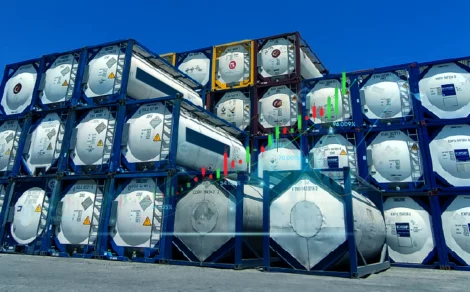If you want to invest in the stock market but do not know or do not have time for specific stock selection, you can start your investment with mutual funds. Do you know how and when mutual funds started in India?
A robust financial market with widespread participation is crucial for a developed economy. In line with this broader goal, India established its first mutual fund, the Unit Trust of India (UTI), in 1963.
This initiative was spearheaded by the Government of India and the Reserve Bank of India, aiming to promote savings, investments, and participation in the income, profits, and gains generated by the Corporation through the acquisition, management, and sale of securities.
Over the past few years, the mutual fund industry in India has experienced significant growth. Well, read this blog to learn the history of mutual funds in India.
A Phase-Wise Overview of the Mutual Fund Industry in India
You can categorise the origin of mutual funds into five key phases, as below:
-
First Phase – 1964-1987
So when was mutual fund started in India? The industry of mutual fund established began in 1963 with the establishment of UTI, formed through an Act of Parliament and operating under the regulatory and administrative control of the Reserve Bank of India (RBI).
In 1978, UTI was separated from the RBI, and the Industrial Development Bank of India (IDBI) took over its regulatory and administrative responsibilities.
The first scheme launched by UTI was the Unit Scheme 1964 (US ’64). By the end of 1988, UTI’s Assets Under Management (AUM) had reached ₹6,700 crores.
-
Second Phase – 1987-1993 – Inception of Public Sector Mutual Funds
In 1987, public sector mutual funds were introduced by public sector banks, the Life Insurance Corporation of India (LIC), and the General Insurance Corporation of India (GIC).
SBI Mutual Fund, established in June 1987, was the first mutual fund outside of UTI, followed by Canbank Mutual Fund in December 1987, Punjab National Bank Mutual Fund in August 1989, Indian Bank Mutual Fund in November 1989, Bank of India in June 1990, and Bank of Baroda Mutual Fund in October 1992.
LIC launched its mutual fund in June 1989, while GIC followed with its own in December 1990. By the end of 1993, the mutual fund industry had amassed ₹47,004 crores in assets under management.
-
Third Phase – 1993-2003 – Entry of Private Sector Mutual Funds
In April 1992, SEBI was established to regulate and protect investor interests in India’s securities market. In 1993, SEBI introduced its first set of Mutual Fund Regulations, and the first private sector mutual fund, Kothari Pioneer (now Franklin Templeton), was registered.
This marked the beginning of a new era for the Indian mutual fund industry, offering more options to investors. The SEBI (Mutual Fund) Regulations were updated in 1996. By January 2003, the industry had 33 mutual funds, with a total AUM of ₹1,21,805 crores, and UTI held ₹44,541 crores of that amount.
-
Fourth Phase – Since February 2003 – April 2014
In February 2003, UTI was split into two entities: SUUTI and UTI Mutual Fund, following the repeal of the Unit Trust of India Act 1963. This led to a phase of consolidation in the mutual fund industry, marked by mergers among private-sector funds.
After the 2009 global financial crisis, the Indian mutual fund industry faced a downturn, with many investors losing faith in mutual funds. The abolition of entry loads and the crisis’s aftermath slowed recovery, resulting in sluggish growth in AUM between 2010 and 2013.
-
Fifth (Current) Phase – Since May 2014
In September 2012, SEBI introduced measures to boost the mutual fund industry and expand its reach, especially in Tier II and Tier III cities.
Since May 2014, the industry has seen steady growth, with AUM crossing ₹10 trillion in May 2014, ₹20 trillion in August 2017, and ₹30 trillion in November 2020.
By February 2025, AUM had increased to ₹64.53 trillion, a five-fold growth in 10 years. The number of investor folios also grew from 8.88 crore in 2020 to 23.23 crore by 2025.
This growth was driven by SEBI’s measures and the vital role of mutual fund distributors in expanding the retail base, especially in smaller towns.
Facts About the Growth of the Mutual Fund Industry
Follow this table to understand the total AUM of Mutual Fund companies across the history of mutual funds in India:
| Year | AUM |
| 2014 | ₹10 lakh crore |
| 2015 | ₹12.02 lakh crore |
| 2016 | ₹17.89 lakh crore |
| 2017 | ₹20 lakh crore |
| 2018 | ₹24 lakh crore |
| 2019 | ₹24.25 lakh crore |
| 2020 | ₹30 lakh crore |
| 2021 | ₹37.7 lakh crore |
| 2022 | ₹40 lakh crore |
| 2023 | ₹50.78 lakh crore |
| 2024 | ₹68 lakh crore |
The Future of Mutual Funds in India
India’s mutual fund industry is ready for continuous growth and according to a report India’s mutual fund AUM (Assets Under Management) may reach ₹100 lakh crore by 2030.
Over the past five years, the industry has witnessed significant growth, even amidst global challenges, indicating that this positive trend is likely to persist.
As more investors continue to choose mutual funds, either through SIPs or lump sum investments, it reflects the industry’s stability and the long-term confidence investors have in mutual funds, despite the inherent risks.
Key Tools for Mutual Fund Investors
After knowing the history of mutual funds in India, if you are considering a mutual fund investment, you can use funds using these tools:
-
Credit Rating
Debt papers in a fund are rated by specialised agencies based on their risk level, using their detailed methodology.
These ratings range from AAA (highest safety) to D (default) and are typically available in the fund’s fact sheet.
A higher rating signifies lower credit risk, and since investors typically choose debt investments to minimise risk, they should avoid funds with too many low-rated papers. This rating system applies solely to debt schemes.
-
Sharpe Ratio
The Sharpe ratio tracks changes in a portfolio’s risk-return profile when a new asset or asset class is added to a mutual fund portfolio. It is calculated using the formula: (Expected Return – Risk-free Return) / Standard Deviation.
This ratio helps determine if a portfolio’s excess returns are due to smart investment choices or excessive risk-taking. While portfolios may yield different returns, a good investor understands that higher returns should not come with excessive risk.
A higher Sharpe ratio indicates better risk-adjusted performance, while a negative Sharpe ratio suggests that a risk-free asset would outperform the analysed security.
-
Expense Ratio
The expense ratio represents the cost an investment company incurs to manage a mutual fund portfolio. It is calculated yearly using the formula: Total expenses charged by the fund/average assets under management. A lower expense ratio is more favourable for investors.
-
Portfolio Concentration Ratio
This ratio provides a detailed breakdown of the mutual fund’s investments across various markets, typically representing a percentage of the fund’s top five stocks or sectors.
-
Exit Load
A mutual fund charges a penalty for early withdrawal, known as the exit load. This fee typically ranges from 0% (for liquid funds) to 1% (for equity schemes held for less than a year).
It is wise to invest in schemes with lower exit loads. You have to bear the exit load depending on when you redeem your units.
Final Thoughts
With mutual funds, you can reduce the tension of choosing stocks one by one to place your money. Unlike in the history of mutual funds in India, buying shares and mutual funds is very easy with online stockbrokers.
At Torus Digital, we offer direct mutual funds that save you money by avoiding unnecessary charges for the commission of regular funds. To start your journey with us, you can open a lifetime free Demat account with us with zero account opening fees.
Keep in mind, “Start small, think big.” By adopting disciplined investment strategies today, you can unlock the full potential of these financial tools to build a prosperous future. Open your account now!








